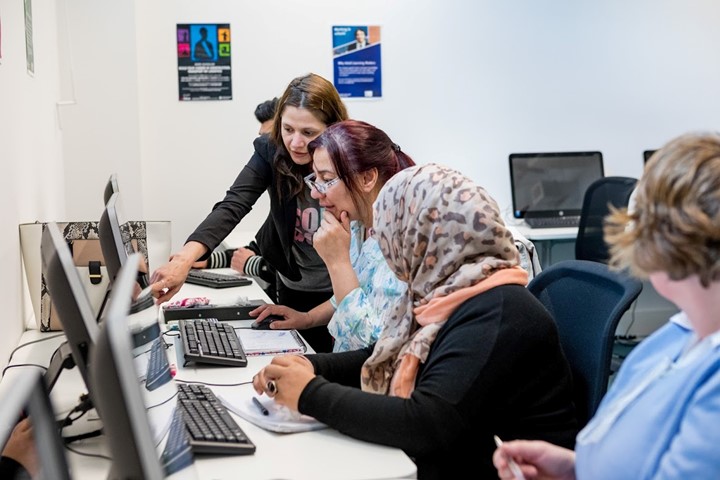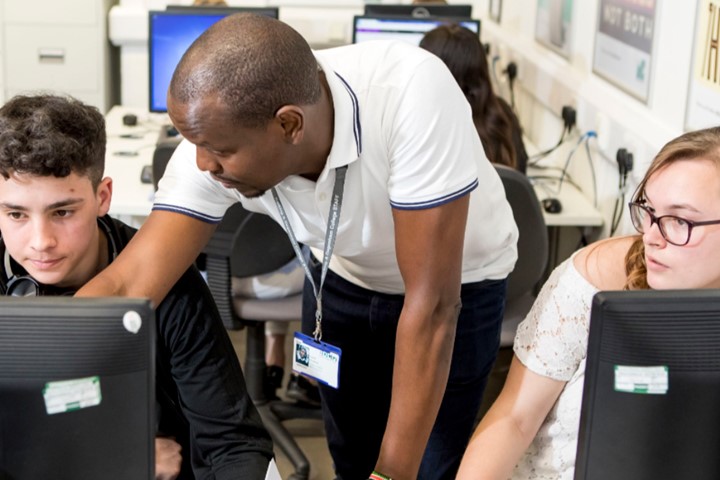New technologies are not a silver bullet for improving learner outcomes
Written by Vikki Liogier, Head of Learning Technologies at the Education and Training Foundation (ETF).
These days it is widely recognised that digital skills and pedagogy are closely interlinked. Whilst there is no silver bullet for improving learner outcomes, new technologies help to make lessons more engaging and relevant – especially as learners enter an increasingly digital world of work.
It is therefore important that teachers, trainers and assessors are supported in exploring, adopting and taking a lead on using new technologies to aid student learning.
In his speech at the launch of the Bett Show 2019, Education Secretary the Rt Hon Damian Hinds MP outlined new plans to launch a government EdTech strategy later this year.
The plan will aim to harness the power of technology in schools and colleges, strengthening the training teachers receive, reducing their workload, and unleashing young people’s potential.
ETF is the sector-owned workforce development body for the Further Education (FE) and Training Sector. As the guardian of professional standards for the sector, ETF is well placed to help change the sector’s perception of new technologies and promote the use of digital to enhance teaching, learning and assessment.
Defining what good use of technology looks like
In spring 2018, the ETF published its own EdTech Strategy with a mission statement: "To inspire and support teachers, trainers, leaders and governors in the Further Education and Training sector in building skills, understanding and confidence in using new technologies to enhance the learners’ journey and maximise personal, organisational and learner outcomes."
The strategy includes the strategic priority to develop an EdTech Competency Framework. In November 2018, the ETF launched that framework in the shape of the Digital Teaching Professional Framework (DTPF).
The DTPF helps to define what “good” looks like and what digital skills progression means in three stages of personal development:
- Stage 1: Exploring – practitioners assimilate new information and develop basic digital practices
- Stage 2: Adopting – practitioners apply their digital practices and expand them further
- Stage 3: Leading – practitioners pass on their knowledge, critique existing practice and develop new practices
Stage 3 refers to innovation in teaching practice. The framework is therefore concerned with innovating using technology and the steps that lead up to innovation.
A time-saving way for teachers and trainers to learn about new technologies and share practice
A sector-wide Training Needs Analysis survey undertaken by the ETF in 2017, which collected the perspectives of over 400 institutions and more than 2,300 teachers, trainers, leaders and assessors, flagged up that training related to digital technologies was the third most frequent area of unmet demand in the sector.
To affirm and support teachers, trainers and assessors in using technology, ETF has just launched the Enhance Digital Teaching Platform. The new service provides free, bite-size training resources to help practitioners develop their understanding of how to redefine their pedagogic approaches with learning technologies in line with the DTPF.
Training modules are compact, easy to access anytime, anywhere, on any device, and are linked to digital achievement badges at the three stages of personal development set out in the DTPF – Exploring, Adopting, Leading. The digital badges can be used to share progress and achievement on social media and can be added to a LinkedIn profile or a CV as evidence of competency.
Modules cover topics including using digital technologies to share and exchange practice, supporting and guiding learners using a Virtual Learning Environment, collaborating with learners synchronously, and digital well-being.
New modules are being added at regular intervals to give 40 different modules available for use by the end of March. With features such as sharing, liking and feedback, the service helps build a community of practice.
Joining up sector developments
Both the framework and the Enhance Digital Teaching Platform help to align initiatives and professional standards across the sector. The DTPF was built in collaboration with Jisc – a not-for-profit organisation which provides digital solutions for UK education and research.
It is mapped to the Jisc Digital Capabilities framework and ETF’s Professional Standards and draws on the EU Framework for the Digital Competence of Educators.
Jisc has recently updated their FE and Skills Teacher profile in line with DTPF and is working towards aligning their Discovery tool for digital skills self-assessment so that users can navigate directly to relevant Enhance Digital Teaching Platform resources.
To ensure the framework and platform are accepted as the direction of travel for the sector, it is vital that key digital experts were involved at the very start.




